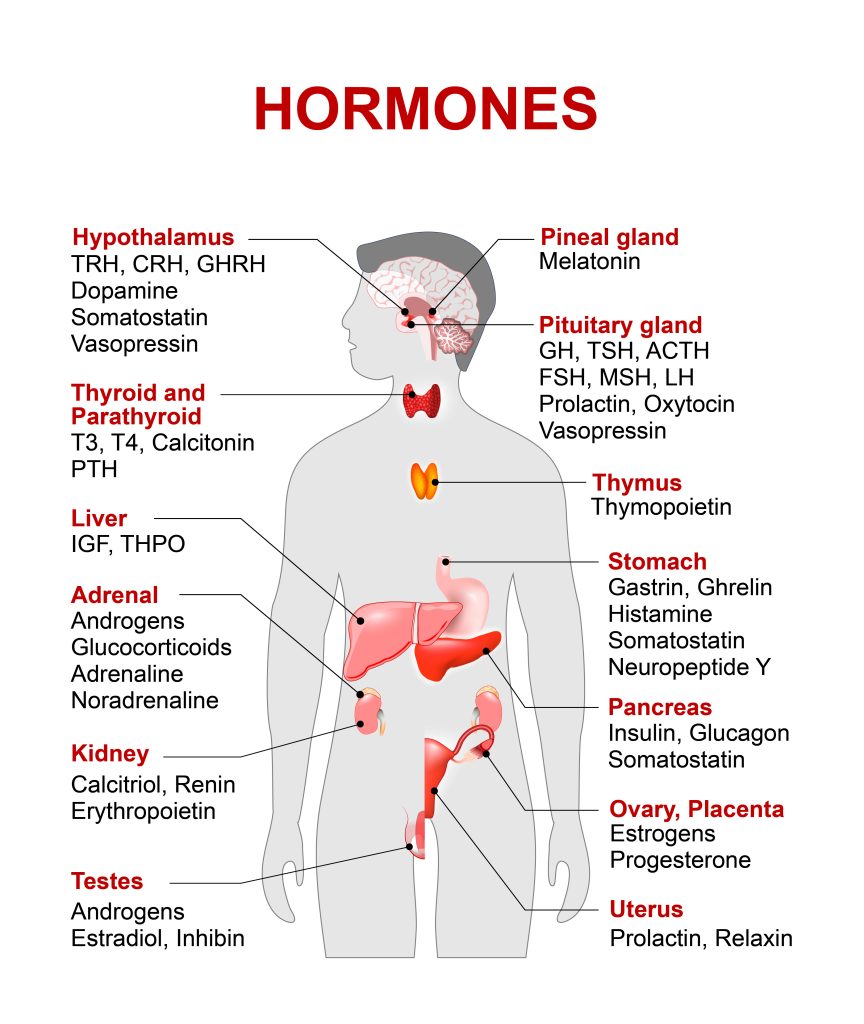INTRINSIC DAMAGE AND THE HUMAN MAINTENANCE SYSTEM
“When scientifically investigating the natural world, the only thing worse than a blind believer is a seeing denier.”
Neil deGrasse tyson
The current aging paradigm is based on the assumption that the default state of a complex organism is to remain alive. By contrast, the New Paradigm observes that the default state of all matter, including living organisms, is to be inanimate, i.e., dead. The New Paradigm highlights the significance of two countervailing forces that have hitherto received little attention from conventional academicians – intrinsic damage and the human maintenance system. Regardless of any extrinsic factors, the cells and other biological components that make up the human organism have very short lifespans – frequently measured in days. The intrinsic damage that results from that constant dying off of biological components (and less than perfect replacement thereof) is an inexorable force that has afflicted every complex metazoan that has ever existed on the planet.
Intrinsic Damage
In a 1957 article, evolutionary biologist George C. Williams wrote: “It is remarkable that after a seemingly miraculous feat of morphogenesis, a complex metazoan should be unable to perform the much simpler task of merely maintaining what is already formed.”(1) In 2007, biogerontologist Aubrey de Grey wrote that the infirmities associated with aging are paradoxical because “it seems obvious that the maintenance of a complex machine in a fully functional state is a vastly simpler problem than the construction of that machine, so evolution, having mastered the latter, should find the former a doddle.”(2)
These quotations highlight perhaps the most fundamental misconception of the aging paradigm. Aging theorists have historically viewed complex organisms as akin to machines. Once one is fully developed, it’s assumed that, left to its own devices, it should be simple to maintain itself indefinitely. As a result, aging theorists tend to ignore the significance of maintenance systems. Instead, they focus on identifying the types of damage to biological components that maintenance processes appear to be incapable of preventing.(3)
The critical hidden assumption/misconception is that the default or natural state of an organism and its components is to live indefinitely, subject only to wear and tear or entropy.(4) That’s simply wrong.
The gestalt shift called for by the New Paradigm involves the acknowledgement that the default state of all matter (including all organisms) is to be inanimate. Each of the trillions of biological components (5) that make up the human organism is itself a complex organism with a lifespan that is typically measured in days. Maintenance processes do not, and cannot, prevent those biological components from sustaining damage and dying. Complex metazoans are possible not because components are long-lived, but rather because, over the eons, metazoans have developed sophisticated maintenance processes that replace the components that die, thus allowing for the survival of the organism, notwithstanding the inexorable dying off of its components.
Overview of the Human Maintenance System
Specific Maintenance Processes
Mitochondrial Turnover
Mitochondria are organelles within cells that are responsible for the generation of the energy necessary for cell survival through aerobic metabolism. Like all biological components, mitochondria have short lifespans, typically estimated to be about two or three weeks, even in the absence of any extrinsic sources of damage. (6) Damaged mitochondria are replaced through a maintenance process known as “mitochondrial turnover.” Mitochondrial turnover involves the selective identification, isolation and destruction of damaged mitochondria (through fission and mitophagy), accompanied by the concurrent reproduction of healthy new mitochondria (mitochondrial biogenesis).(7)
Mitochondria should not be considered individual structures but rather as a reticular network. (8) The organization of mitochondria into reticulum can be likened to cells of a similar type organizing into tissues, such as bone tissue. The mitochondrial network is dynamic in nature, with mitochondria joining and separating from the network in processes termed fusion and fission.

Mitochondrial fission is the splitting of one mitochondrion into two. It differs from biogenesis in that fission is a process for separating out the damaged portion of a mitochondrion from the healthy portion. The damaged part of the mitochondrion is then selectively eliminated through the mitophagy process. Studies have shown that the mitophagy process selectively isolates and eliminates dysfunctional mitochondria.(9)
Bone Remodeling
No maintenance process works perfectly, and all biological components are constantly undergoing intrinsic damage and dying.(10) Damage or a flaw in any component at any level of biological organization can affect higher levels. To prevent accumulating damage from having an adverse impact on the entire organism, natural selection endowed humans with backup maintenance processes that operate at each of the higher levels of biological organization.
Bone remodeling is an example of one maintenance process that operates at a higher level of biological organization – the tissue level.(11) Like substantially all cells in the human body, bone cells have limited longevity. Although maintenance processes do remove and replace damaged and dead bone cells, there is inevitably a buildup of accumulated damage in bone tissue. Bone remodeling involves the removal of damaged bone tissue (resorption), accompanied by the formation of new bone tissue to replace the old tissue. Bone remodeling is an active, ongoing building and maintenance process that begins at the embryonic stage and continues throughout one’s lifetime. (12) In other words, the same bone remodeling process that is involved in the growth and development of the skeletal system in our youth remains available to remove and replace damaged bone tissue throughout our adult years.
Disorders Illustrate The Power of the HMS

Vitamin C is necessary in order for the proper functioning of a number of different maintenance processes. Among other things, vitamin C is necessary for certain enzymatic actions that need to occur in order for the body to create collagen, a substance that holds tissues together, and thus facilitates certain maintenance processes. The absence of vitamin C does not itself inflict any damage. However, as a result of maintenance processes that utilize collagen being disrupted, intrinsic damage accumulates rapidly. The accumulated damage manifests itself as the symptoms of scurvy. The symptoms of scurvy can be quite devastating and even fatal. In fact, in the 18th century, the problem was so common that ship owners and governments assumed a 50% death rate from scurvy for their sailors on any major voyage.
Another example would be muscle disuse atrophy. At one time it was a common medical practice to confine a broken limb in a hard cast for up to six weeks. Upon removing the cast, the broken bone would be fine, but the muscle that was also confined by the cast would have undergone horrific deterioration. That deterioration is the result of the absence of muscular activity interfering with the effective functioning of a maintenance process (most likely, mitochondrial turnover).
Higher Level Maintenance Processes Are Quite Complex
Higher-level maintenance processes are much more elaborate than lower level processes. Subcellular processes, such as mitochondrial biogenesis, work at the molecular level. By contrast, tissue level maintenance processes involve much more than the generation of tissue from simple molecules. Those processes utilize prefabricated components, such as stem cells and progenitor cells. The processes are coordinated by a host of different hormones. For example, among the hormones known to be involved in the bone remodeling process described above are parathyroid hormone (PTH), human growth hormone (GH), glucocorticoids, thyroid hormones (T3 and T4) and sex hormones. (13) The production, storage and secretion of the hormones necessary for a tissue level maintenance process is possible only because humans have a sophisticated endocrine system.(14)

Limitations of the Human Maintenance System
Humans do undergo certain physiological changes with advancing chronological age that are natural/genetically mandated. Those non-functional changes occur because the human maintenance system is not designed to prevent or reverse all age-associated physiological changes. Natural selection makes cost/benefit choices relating to the optimal way to allocate finite resources.
Conclusion
- Williams, GC, Pleiotropy, Natural selection, and the evolution of senescence, Evolution (1957).
- De Grey, ADNJ, Life span extension research and public debate: societal considerations, Studies in Ethics Law and Technology (2007).
- See, e.g., Gladyshev VN, Aging: progressive decline in fitness due to the rising deleteriome adjusted by genetic, environmental, and stochastic processes, Aging Cell, (2016).
- Hayflick L, Entropy explains aging, genetic determinism explains longevity, and undefined terminology explains misunderstanding both. PLoS Genetics (2007).
- The New Paradigm uses the term “component” rather than cell, because cells are themselves made up of a multitude of components. Cells that would ordinarily have long lifespans can have their lives significantly shortened by the accumulation of damage to their components.
- Gottlieb RA, Gustaffson AB, Mitochondrial turnover in the heart. Biochim Biophys Acta (2011).
- Diaz f, Moraes CT, Mitochondrial biogenesis and turnover, Cell Calcium (2008).
- Ogata T, and Yamasaki Y, Ultra-high-resolution scanning electron microscopy of mitochondria and sarcoplasmic reticulum arrangement in human red, white, and intermediate muscle fibers, The Anatomical Record (1997).
- Frank M, et al., Mitophagy is triggered by mild oxidative stress in a mitochondrial fission dependent manner, Biochimica et Biophysica Acta (BBA) – Molecular Cell Research (2012).
- Gladyshev VN, Aging: progressive decline in fitness due to the rising deleteriome adjusted by genetic, environmental, and stochastic processes, Aging Cell, (2016).
- Hadjidakis DJ, Androulakis II, Bone remodeling, Ann. N. Y. Acad. Sci. (2006).
- Id.
- Id.
- The endocrine system is made up of glands that produce, store and secrete hormones. Hormones are chemical messengers that regulate and coordinate the functions of different organs and systems. Hormones also act as signaling molecules that regulate various maintenance processes.
The next essay in this Section is “Scientific Revolution.”
